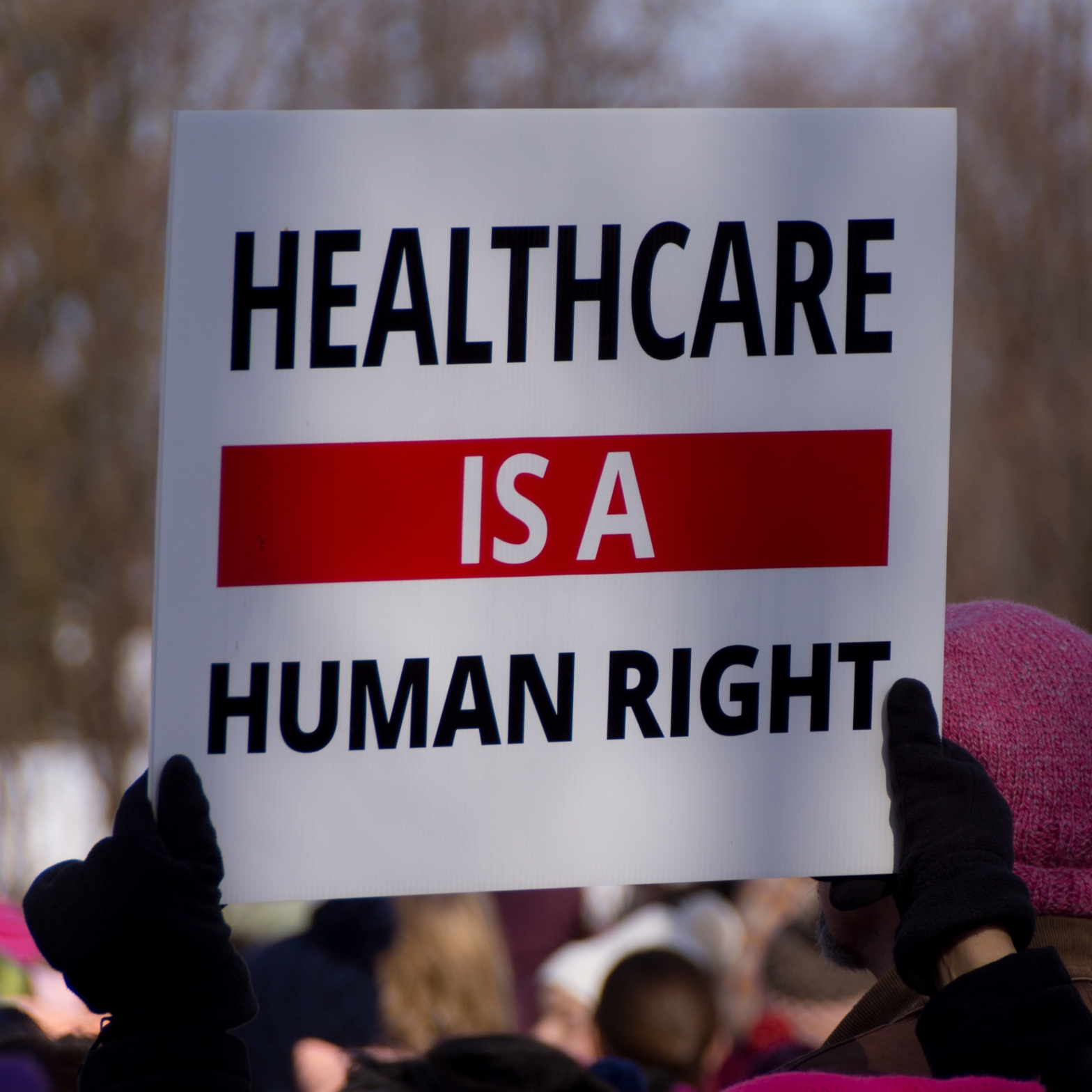By Nathan Tong
In late January of this year, the widespread transmission of COVID-19 began in the continental United States. It would be another two months before the first lockdown order was issued. In the intervening time, the response to the burgeoning crisis in the U.S. was a patchwork of mismanagement on the behalf of the State and ineffective responses at the hands of private companies.
Despite being the wealthiest and most powerful nation on the planet, the U.S. has one of the worst healthcare systems in the developed world when measured by either per capita cost or average healthcare outcome. This is not a novel insight—it has been thoroughly covered in the past—nor is it original to point out that the Trump administration has seriously bungled its response to this crisis.
While many are quick to blame Trump for the ongoing COVID-19 crisis, few people are talking about how systemic racism under capitalism is affecting who can access healthcare and the quality of the healthcare that is available.
Those with a vested interest in denying the existence of systemic discrimination often try to discredit it by setting an impossibly high standard of proof. It is true—we do not have all the data on COVID-19 cases by demographic at the moment, and we likely never will. For the first few months of the crisis, many states simply did not record race or ethnicity information for COVID cases or deaths. Some of the ones that did missed or combined key demographics (e.g., using categories like “Black, White, or Other”). There also continues to be a huge problem with under-testing in poor and ethnic minority communities. Because of these factors, the data we have likely misrepresents racial disparities, just as criminally low testing rates have caused a severe undercounting of total cases in the U.S.
Regardless, the data we do have paint a clear picture. The case rate for Latinos is four times that of non-Hispanic whites, and for Black and Native Americans, it is approximately five times that rate. Black people have 2.4 times more case deaths than White people do. (Latinos are protected from increased death rates due to the lower age of the population; 75 percent of Latinos are 40 or younger; when corrected for age, they have similar death rates as Black Americans.)
None of this is surprising given the context of systemic racism present in the U.S. Even before COVID-19, minority communities had significantly worse health outcomes in general. Many doctors simply do not believe people of color when they describe their symptoms. In addition, factors correlated with increased case severity and mortality including diabetes, cancer, heart disease, and substance dependency, are present at significantly higher rates among Native and Black Americans, than among White Americans. Some of these factors are caused or exacerbated by environmental racism—Black Americans are 75 percent more likely than other groups to live next to a hazardous waste facility.
We can understand the roots of racial disparities in healthcare by looking at the material conditions of these communities under capitalism. None of these groups are biologically predestined to face these diseases, and it is broadly understood that “race” as a concept has no intrinsic medical implication; rather, societal conditions that result from racism have medical implications.
Black Americans suffer from much higher rates of poverty than white Americans. These communities tend to have fewer grocery stores and medical facilities and drastically worse infrastructure. Black Americans disproportionately lack private transit like cars, suffer from de facto racial segregation, and are overrepresented in overcrowded jails, prisons, homeless shelters, and detention centers. Latino communities also suffer from higher rates of poverty and similar issues.
Native Americans are the hardest-hit minority group by far, with the Navajo Nation suffering the highest COVID case rate of any area, coming in around 3.4 percent (compared to the much more populous New York State’s 1.9 percent). Many factors contribute to this, but the most pressing are a lack of running water and electricity to approximately one-third of homes, the high prevalence of chronic illnesses, a lack of affordable food, and a truly massive amount of poverty. Forty percent of the residents of the Navajo Nation live under the federal poverty level.
These issues explain, to a large degree, how COVID disproportionately affects these groups; a higher rate of pre-existing conditions is linked to higher case severity and mortality. Multi-generational families, lack of running water or electricity, and low-wage jobs with no sick leave make it harder to maintain social distance, especially for the elderly. Not having a car not only forces people to depend on public transit—a vector for disease spread due to bosses mismanaging safety precautions for workers and riders—but also precludes things like drive-thru testing while making testing centers in other communities significantly harder to reach. These mechanisms explain how the disease disproportionately affects these groups, but what it does not explain is why.
Why is it that in the twenty-first century, in the richest country on Earth, there are almost 60,000 people without access to running water and electricity? Why do Black and Latino Americans face such endemic poverty and disease? Why is there a lack of affordable food, functioning infrastructure, and reliable transit for these communities in particular?
There is a long and sordid history of racist ideology and policy being used to reinforce the capitalist system. The use of racism, for instance, to exploit Native populations goes back to the time of Columbus, and continues to this day. Under the CARES act, $8 billion was earmarked for Native American tribes, but before this aid was delivered, tribal chiefs unsuccessfully fought a lengthy court battle to prevent it from being redirected to private, for-profit corporations in Alaska.
Money earmarked for native populations is often instead pocketed by the private corporations hired to service them, and the results speak for themselves. In the Navajo Nation, 30 percent of residents have no water.
Karl Marx famously wrote that “capital comes dripping from head to foot, from every pore, with dirt and blood.” Marx was referring to the way that violent institutions like the slave trade were integral to the birth of the capitalist system out of the old feudal system. For capitalism to function, massive amounts of wealth had to first be accumulated in the hands of the bourgeoisie, something Marx called “primitive accumulation”. Racism as we know it today, rooted in pseudo-scientific arguments, came about during this period to justify the enslavement of Africans and the genocide of indigenous people in the new world.
Racism continues to be used to justify and support capitalism. Racism is used by the capitalist class against Latino and Black American populations to justify keeping them in poverty and to keep the working class divided. From redlining to mass incarceration, Black Americans have been a consistent target of the ruling class. Latino Americans face similar racial targeting, from the 2000’s rhetoric that they are “taking our jobs” to the late ‘10s “bad hombres” of Trump, the capitalist class strives to keep the working class divided.
We have seen the ruling class pursue this tactic throughout the whole history of capitalism, and we have no reason to expect they intend to change. Even more recently, Asian Americans have become scapegoats for the Coronavirus crisis. The only real solution, the only way we can cure racism at a systemic level, is to end the capitalist system as a whole.
No social system exists in a vacuum of course, and ending capitalism alone will not cure racist attitudes. However, racist attitudes cannot be meaningfully fought against if we do not remove the racist structures that recreate these ideas and the capitalist ruling class that profit from perpetuating racism. Only a simultaneous fight against the capitalist system, and the racist attitudes that sustain, it will be successful.
Capitalism, at its root, seeks to exploit workers as much as possible. Stemming from slavery, the exploitation of Natives and European colonialism, the group of workers who are hyper-exploited in our society are disproportionately black and brown people. Racism as a concept was invented to justify this system, to justify the servitude of the slave and the domination of colonial holdings, and it still functions to justify the exploitation of the working class today.
None of the issues affecting our healthcare system are isolated. They are merely one aspect of how capitalism utilizes racism to maintain power. We must join together, united with our comrades of all colors, to dismantle the destructive system of capitalism and to create a system of truly universal health coverage and a worker’s economy based on human need.
Image Credit: Marc Nozell via Flickr // CC BY 2.0.

